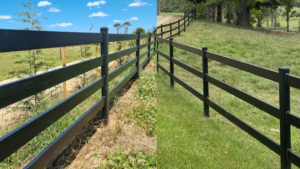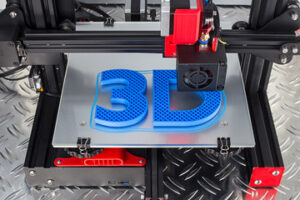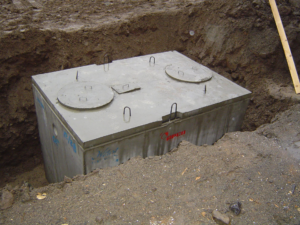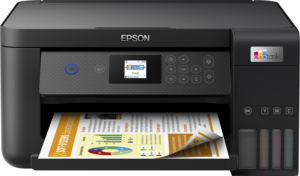Stucco is a popular exterior cladding material that can be used for many reasons. However, when stucco is removed for any reason, proper removal techniques must be used to avoid structural damage.
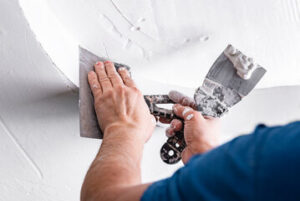
Professionals will begin by assessing the existing stucco to determine the best removal method. This assessment will also help them identify any underlying issues. Keep reading the article below to learn more about Stucco Removal.
Water intrusion is a major cause of damage to stucco and can compromise the integrity of your home or commercial building. Common signs of moisture problems include discoloration, cracks, blisters, efflorescence, and mold and mildew growth. Addressing these issues promptly can save you money on repair costs and prevent further damage to the structure of your home.
The diverse climate of the Tri-State Area poses specific challenges for stucco surfaces, including fluctuations in temperature and settling of the structure. The resulting cracks and holes can become gateways for moisture, leading to deterioration of the material over time. These openings can also reduce your home’s insulation and energy efficiency, increasing the strain on HVAC systems and resulting in higher utility bills.
Moisture damage can occur due to a number of factors, including lack of proper drainage and improper waterproofing. The resulting water seepage can saturate the substrate, causing it to expand and contract. Over time, the resulting force can erode and destroy the stucco. If left unattended, these damages can lead to a variety of additional problems, from unsightly discoloration and cracking to underlying structural damage and mold and mildew growth.
Performing regular inspections of your home’s exterior is important, and stucco is no exception. During these inspections, look for dark spots or stains that indicate water infiltration and may lead to mold and mildew growth. Additionally, keep an eye out for the development of hairline cracks that widen over time or create a crumbling texture.
If you notice any of these warning signs, you should consider hiring a professional stucco contractor to inspect the integrity of your stucco and take appropriate action. In addition to repairing existing damage, they can help you prevent future problems by addressing underlying issues like proper drainage and waterproofing.
Depending on the extent of the damage, removal of your stucco can vary in cost. The size of the area being removed, site accessibility, and any repair work needed will all impact the final removal cost. In addition, specialized tools and equipment might be necessary to ensure effective removal without damaging the underlying brick or concrete.
Black Stains
Black stains often appear on stucco walls, especially in unpainted areas. They are caused by dust and particulate air pollution that can get stuck in the porous textured surface of the wall. The easiest way to remove these stains is by using an oxygen bleach cleaner. Mix the cleaner with water and apply it to the affected area, saturating it thoroughly. Allow the solution to sit for up to 30 minutes. Then, use a scrub brush dipped in the cleaning solution and scrub away the black stains. After you have finished scrubbing, rinse the stucco with clear water from a garden hose.
If your staining problem is more serious than just a bit of dirt, you may have mildew or algae growth in the pores of the stucco. Mildew or algae will appear as a dark color that looks similar to dirt, but it is actually a microorganism. To get rid of these stains you will need to kill the mildew or algae first, and then clean the area. You can use a bleach solution to kill and then wash off the microorganisms, but it is best to use a mold killer designed specifically for stucco surfaces, since this will avoid damaging the material.
Another common cause of stains on stucco is soot, which can be quite difficult to remove from the porous surface of the wall. This type of stain is usually caused by small fires or stovepipe emissions, and it is a good idea to wear a dust mask when attempting to remove it from the wall. Oxygen bleach cleaner can also be used to help eliminate the soot stains, but it is important to be gentle in your efforts to ensure that you do not damage the stucco material.
In some cases, you may be able to use a pressure washer to clean the stucco, but it is important to only use mild pressure so that you do not damage or crack the material. In addition, you will want to be sure that you are rinsing the stucco at a downward angle so that you do not get any of the cleaning solution behind the wall.
Water Damage
Stucco can be damaged by water, and this is especially true of older homes. Even the smallest crack or chip can allow moisture to seep through and cause serious problems. This can lead to mold, mildew, and other problems. It’s important to deal with these issues right away. Fortunately, the problem can be corrected with stucco remediation or repair.
While a modern stucco makeover may seem like a big project, the process actually isn’t that difficult. A major part of the work is preparation, as stucco is a cementous material that needs to be carefully chipped at and removed. The contractor will lay tarps down and erect scaffolding where needed to prevent damage to the walls underneath. Once the tarps and scaffolding are in place, the contractor will start by drilling a hole through the stucco. Then, they will use a hammer and chisel to remove any pieces that are loose.
Once the contractor has removed all of the loose stucco, they will take a look at the brick walls below to see what kind of repairs are necessary. In many cases, the brick will need to be repaired before the stucco is replaced. This is because the brick can be harmed by water, which is one of the main causes of staining and discoloration in stucco.
When the contractor is ready to begin replacing the stucco, they will ensure that it matches the original color and texture of the home. They will also ensure that the mix of stucco is correct, as different mixes can result in different appearances and different reactions to weather conditions.
Once they have completed the replacement, they will check that it is in proper alignment with the brick and other elements of the house, and then apply a topcoat to seal the surface and protect the new finish from moisture. The topcoat is typically a concrete-like coating that is applied with a trowel and then smoothed.
It’s a good idea to have plastic coverings laid out on the floor to catch small pieces of stucco that might fall off of the ceiling. It’s also important to keep the area clear of debris to avoid tripping hazards. Lastly, it’s important to wear the appropriate safety gear to avoid injury.
Mold or Algae
The unique texture of stucco allows it to collect dirt, grime and sometimes even mildew or algae growth. In these cases, the best way to remove this buildup is a specialized cleaning solution. A mixture of trisodium phosphate (TSP) detergent available at most hardware stores and bleach can remove the stains without harming the stucco surface.
The TSP should be applied and allowed to sit on the wall for several minutes (15 is usually sufficient). This will allow it to penetrate deep into the pores of the stucco to break down the micro-organisms that cause the stains. After letting it soak in, the solution can then be rinsed off with a garden hose or power washer. Be sure to use the lowest setting possible to avoid damaging the stucco with a blast of high-pressure water.
Once the wall is clean, a small strip of copper can be placed near the top of the stucco to prevent recurrence of mold or algae. Copper is a natural biocide and will kill any micro-organisms that try to grow on your stucco walls in the future.
To keep your stucco walls looking great and preventing the need for any major repair, it is important to examine the walls on a regular basis. Look for any cracks or chips, especially in areas around windows. If these are found, they should be repaired immediately.
Another issue to keep an eye out for is moss growing on the stucco. It is important to get rid of moss as soon as it appears, because it can trap moisture against the wall and lead to more damage or even mold growth. To remove moss, a stiff brush can be used with a mixture of oxygen bleach and warm water. Oxygen bleach can be purchased in the laundry aisle of most department stores and is less harsh than chlorine.
It is also a good idea to check the surrounding area of your home for any trees or overhanging branches that might transfer pollen, dirt, bird droppings and other debris to your stucco. It is a good idea to trim the branches or vines regularly as well, because they can be a magnet for algae and mold.
